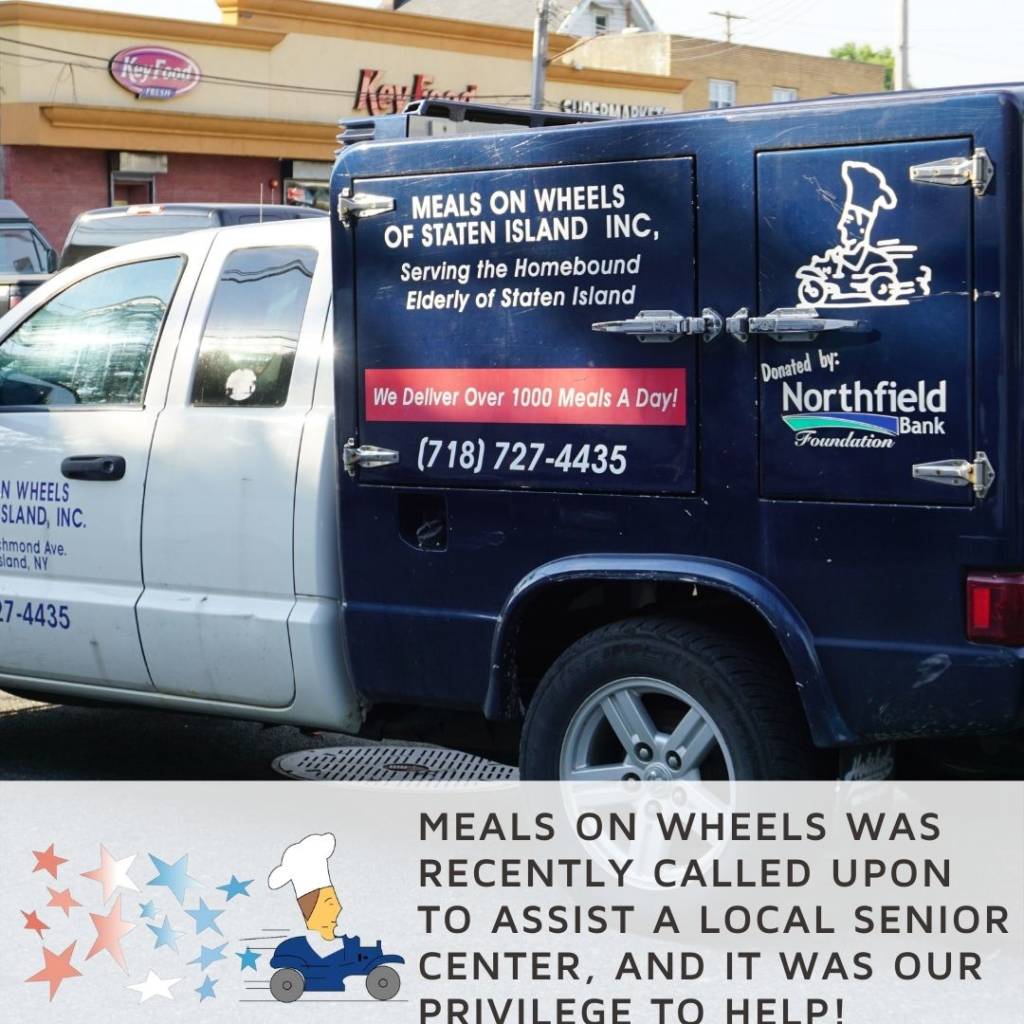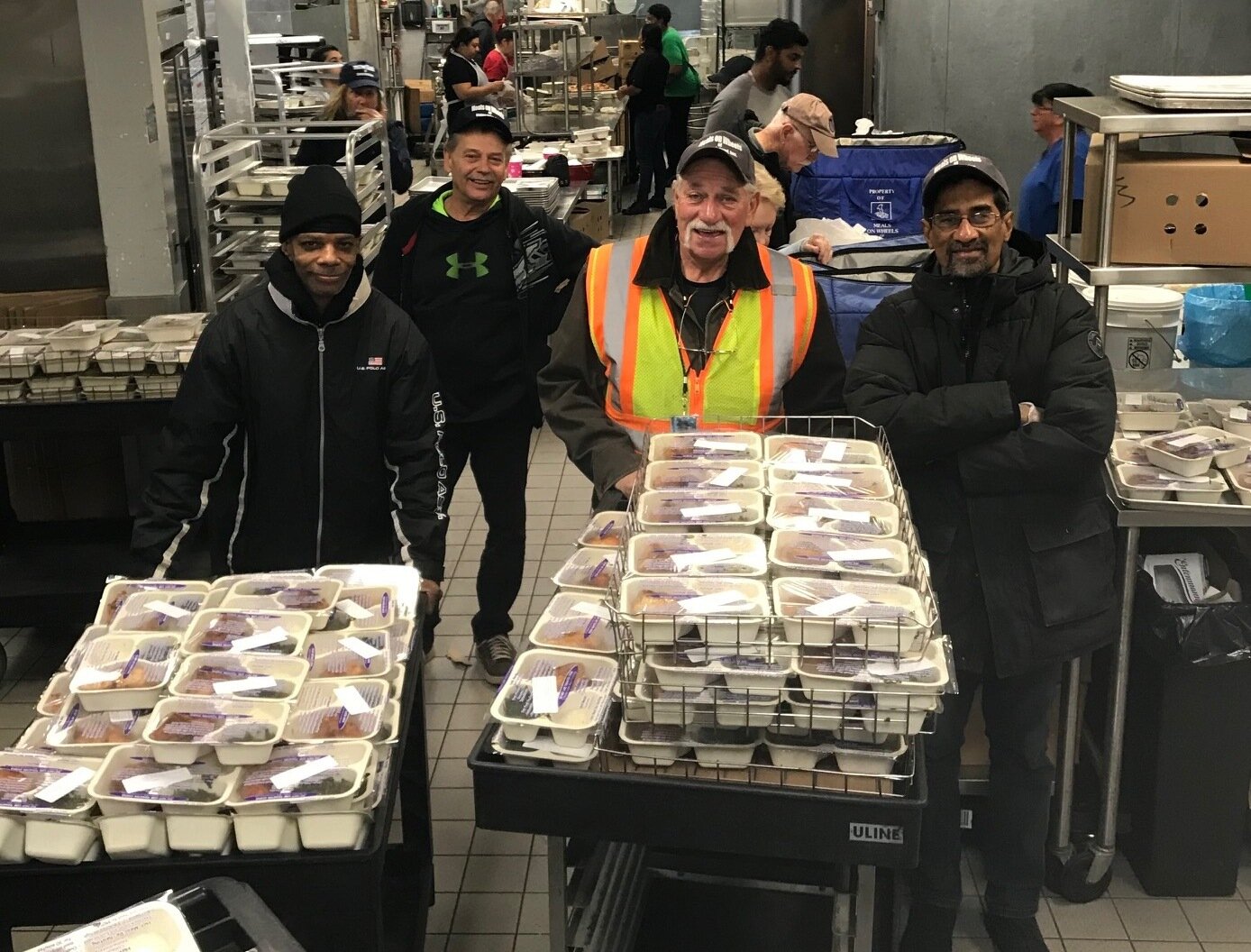Meals on Wheels of Staten Island, Inc. leads the effort to ensure the elderly people in its community receive nutritious meals and the human connection they need to help them live independently. The organization delivers over 750,000 meals per year, and Executive Director Joseph Tornello is already planning for 2030 and beyond. Stop & Shop has supported Meals on Wheels of Staten Island, Inc. through the Community Bag and Bloomin’ 4 Good Programs.
Tell us about Meals on Wheels of Staten Island.
Our mission is in our name; we provide nutritious meals to people over the age of 60 residing in Staten Island, New York, who are unable to cook or shop for themselves. That’s determined by our nurses’ assessment which includes special dietary requirements.
It’s critical that we know their requirements in terms of meal prep and other variables that affect nutrition in the meals that we’re sending. For example, we serve many older adults who have dental challenges who require chopped or pureed meals as part of our daily delivery regimen. We also provide meals responsive to health/medical related dietary requirements, such as a renal diet for people on dialysis. Our focus is about sending out healthy nutrition that is needed for each individual meal recipient.

Home-delivered meals programs in the United States originated with the Older Americans Act (OAA) in 1965, which authorized services for older adults aged 60 and older. Senior nutrition was implemented within OAA in 1972, a 50th Anniversary that we share that that landmark legislation. Although, one meal a day continues to be a basic standard of OAA Nutrition programs, in 1972 our original board of directors established a standard of two meals a day for Meals on Wheels of Staten Island which continues today. We were originally a pilot program of a local nursing home and within the first year, four local hospitals were also preparing meals for us. This provided a clinical perspective right from the beginning enabling us to provide meals responsive to individual dietary requirements.
Our focus is about sending out healthy nutrition that is needed for each individual meal recipient.
We eventually built our own kitchen 21 years ago, intended to serve a census of 500-600 people. We have outgrown our current site where today we deliver meals to a census of 1,300. After several years of planning and site searching, we are on target to move to a new facility that will be operational later this year. This will address our needs now and going forward. We hope to use our current location to serve other food related community needs. We will be ready for the first year of baby boomers, born in 1946, who will reach our current recipient’s average age, 84, in 2030. From there the need for our services will only continue to grow.
What sets your organization apart from others in your community?
Rather than setting ourselves apart from other organizations in our community, I view us as part of a community network serving food needs. We’re a member of the Staten Island Hunger Task Force which includes about 38 organizations addressing food needs including food pantries, soup kitchens, feeding services and faith-based feeding ministries. We coordinate how we are addressing serving food needs in the community, including emergency response situations. We coordinate, for example, with senior centers which are “congregate meal” programs. Some meal recipients can spend time with others as they attend a senior center one or two days a week and receive our meals on the other days. A wonderful partnering.
What are your most essential services?
Just as important as the food we deliver is the daily face-to-face contact we have with homebound seniors. Our nurses will assert that we’ve saved lives. The average age of our recipients is 84 and 60% of our deliveries are to people over the age of 75. So, we’re talking about an older cohort of people. If we deliver to someone every day who comes to the door, alert and dressed, and then one morning seems disoriented and still in pajamas, we’ll call an emergency contact, maybe it’s an adult child who lives nearby, who can then assist. That face-to-face contact not only monitors the well-being of our recipient, but if the door is not answered, it sets into motion a process where the deliverer calls the office, and our staff or nurses gets involved to confirm the status of the recipient.
We also provide a sense of security to our recipients. They know someone sees them every day, knows them and they’re not alone.
We also provide a sense of security to our recipients. They know someone sees them every day, knows them and they’re not alone. It’s a very important aspect of Meals on Wheels programs to be able to have that contact. We always say that’s just as important as the food we deliver.
Tell us a story that clearly illustrates the good work you are doing.
On Thanksgiving and Christmas mornings, volunteers deliver hot turkey meals to some of our meal recipients, usually about 130 seniors who will be alone for the holiday. Some may be described as “elder orphans” who are alone with no other contact person. The South Shore Kiwanis Club has been doing this for over 20 years and it is really a family affair as they come out with their children, spouses and other family members. They also spend time with the recipients who are otherwise alone on the holiday. Think about Christmas morning, in particular. These kids are going out with their parents rather than sitting under their tree opening gifts. Actually, we can’t absorb any more volunteers on these holidays as the Kiwanians have so many people who want to participate on these holidays.
My second story demonstrates the importance of the face-to-face contact we provide. Not long ago, one of our nurses was informed by our deliverer that Claire, the meal recipient, was not looking well at all, based on his normal contact with her. The nurse went to the home, conducted an assessment and told Claire she should go to the hospital and that she would call an ambulance. Claire refused. Our nurse called Claire’s daughter who lived in Florida, explained the situation, and asked her to persuade her mother to go the hospital, otherwise she may not be alive the next day. Fortunately, her daughter convinced Claire, who went to the hospital and received the treatment she needed. Otherwise, this story would not have had a happy ending.
What is your greatest achievement or contribution to the community?
It goes without saying that we couldn’t do what we do without our volunteers. But there is one aspect of our volunteer program that we’re especially proud of. For about 20 years we’ve partnered with special needs programs and organizations that work with people with developmental disabilities, who are their clients. All of these organizations have “day-hab” programs where we are able to provide meaningful activity for them as they help us in the kitchen and cover a significant percentage of our deliveries. These clients are able to appreciate the experience of helping other people. At the same time this partnering provides our organization with immense value.
What do you want people to know about your organization?
One is that we serve all in need. We never have had a waiting list. I mentioned earlier that Meals on Wheels of Staten Island has always served two meals a day, mandated by the original board of directors. That same board also mandated that we never have a waiting list.
Second, we are responding to the growing older adult population with growth in terms of a new facility and with that growth in our delivery capacity. And that always becomes that most important thing.
Third, we have extraordinary volunteers. 80% of our meals are delivered by volunteers, which number more than 450. And most of whom are retired, older adults who are healthy and active and are serving and delivering to their fellow seniors. I use my brother as an example. He’s 76 and has been delivering meals for us for about 10 years since he retired. That is very typical of our volunteers.

I mentioned earlier that we serve all in need. We’re contracted to provide a certain number of meals via the city. It’s our own fundraising that makes it possible for us to go above and beyond those limits and maintain our standard to never have a waiting list. That’s where the funds from the Stop & Shop programs come in.
I always talk about the ongoing “argument” I have with volunteers. I say, “Thank you so much for what you do.” And 99% of the time, they will say, “No, I thank you more for letting me do this!”
How will you use the funds raised from Stop & Shop’s Community Bag and Bloomin’ 4 Good programs?
The funds we receive from Stop & Shop go directly to funding our work beyond what we’re contracted to do and enable us to serve all in need and never have a waiting list.

